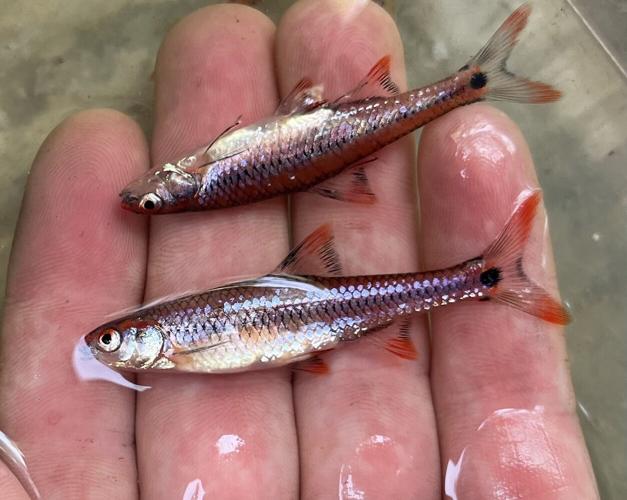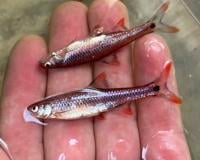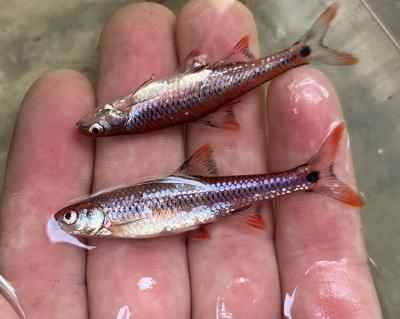(WSIL) -- While surveying fish at Buttonland Swamp in southern Illinois, Hannah Holmquist discovered an aquatic creature she had never seen before. It was a 2-inch-long fish that displayed some red markings and had a dark spot near the rear fin.
She keyed it out and it was later confirmed by a biologist that this was the taillight shiner, thought to have been extirpated from the state, meaning none were living in the wild.
“I was ecstatic,” said Holmquist, a graduate research assistant at Southern Illinois University’s Center for Fisheries, Aquaculture and Aquatic Sciences. “This taillight shiner (Notropis maculatus) only lives for about a year in the wild and doesn’t get much bigger than 2 or 3 inches.”

Hannah Holmquist works from a boat at Buttonland Swamp in southern Illinois surveying fish. This is the location where she found the taillight shiner, thought to be extirpated from the state.
“This rediscovery clarifies that we need to continue to protect it,” said Brian Metzke, a stream ecologist for the Illinois Department of Natural Resources (IDNR), which owns and manages Buttonland Swamp.
Buttonland Swamp is protected as part of the Lower Cache River Land and Water Reserve which is owned by the IDNR. Twelve state-threatened or -endangered plant and animal species have been recorded there. Eleven fish species listed as Species in Greatest Conservation Need have been recorded in Buttonland Swamp.
Metzke said the shiner was found in Illinois in the late 1980s by Brooks M. Burr, emeritus professor of zoology at Southern Illinois University at Carbondale.
For three decades, biologists searched in vain for the species, which had been declared an Illinois endangered species. None were found until Holmquist rediscovered the species close to where Burr had found it in the 1980s.
Holmquist will continue to survey the swamp for fish species for another year or more until she completes her graduate research project.
The fish, which eat algae, crustaceans and aquatic critters, spawn in spring and early summer. The female lays roughly 70 to 400 eggs.





